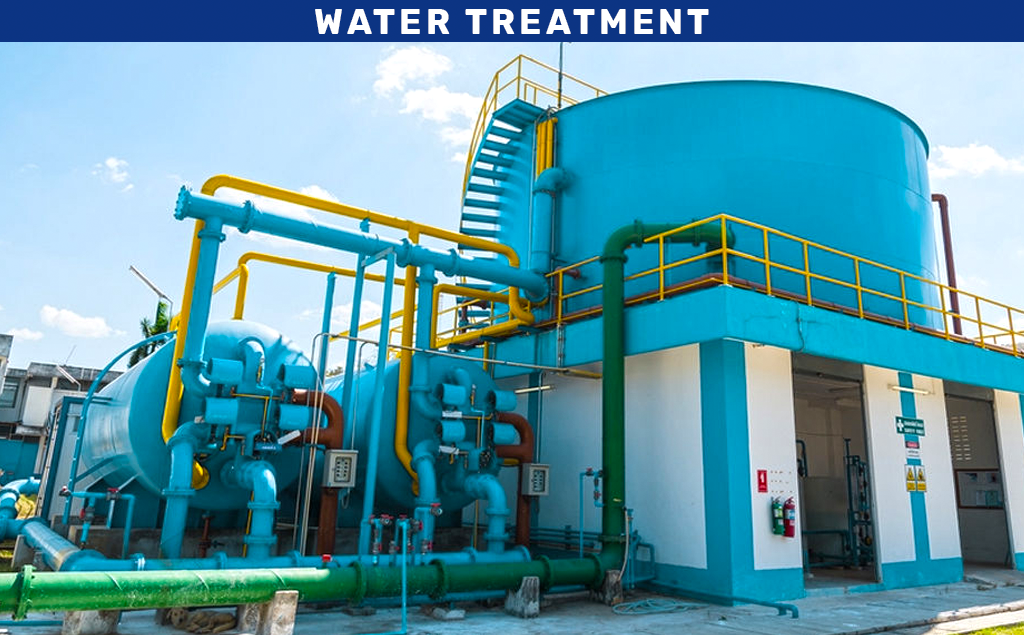What is Water Treatment?
Any procedure that enhances the quality of water to make it suitable for certain end user is referred to as water treatment. The final use could be:
✔️Drinking
✔️Irrigation
✔️Maintaining river flow
✔️Water enjoyment
✔️Boilers
✔️Heat exchangers
To make the water suitable for the intended end use, water treatment involves:
✔️Removing pollutants like oil and different chemicals etc.
✔️Unwanted components like dust, mud etc.
✔️Reducing the concentration (In terms of ppm).
Need For Water Treatment
Water is a fundamental need for all living things. It must be pure and untainted. Enough though water covers:


Water treatment plays a crucial role in industrial operations, ensuring purity and protecting equipment. Additionally, implementing waste heat recovery systems offers numerous advantages, allowing businesses to harness and utilize valuable energy resources efficiently. Let’s explore how these two essential aspects contribute to sustainable and cost-effective industrial processes.
The main causes of water pollution are:





Risks to human health, aquatic ecosystems, industrial equipment and the environment exist. The contamination of water causes severe losses to industrial equipment in terms of big disasters and certain property damages.
Hence, water treatment is needed to address these issues. Water treatment helps not only in protecting human health but also it helps in protecting industrial equipment from damage.
Need For Water Treatment
- Equipment Water Treatment: Focused on the removal of chemicals causing scale, corrosion and foaming within the equipment like boilers and heat exchangers.
- Water Treatment for Drinking: For making water drinkable, water is being treated to maintain a certain pH level within the water also a TDS level of water is maintained below 200 ppm.
Water Treatment Steps
Raw water can be:
- Groundwater
- Sea Water

(1) Oxygen Scavanging
Operation and maintenance of commercial boiler systems and steam-generating plants must address the serious problem of oxygen-related metallurgical corrosion. This can be achieved using carefully selected oxygen scavengers designed specifically for steam boiler corrosion control and feed water corrosion control in steam-raising plants.
Oxygen scavengers are critical to preventing dissolved oxygen from causing corrosion (called oxygen pitting) in boilers. Mechanical deaeration should remove most dissolved oxygen, but chemical oxygen reduction (called scavenging) is required to provide optimum protection.
Oxygen scavengers are designed to reduce (scavenge or destroy) dissolved oxygen, so they can not cause oxygen pitting. The optimum oxygen scavenger is based on system design and steam usage requirements.

(2) Coagulation
The initial stage of water treatment is coagulation. Positively charged chemicals are added to the water during coagulation.
The negative charge of dirt and other dissolved particles in the water is balanced by the positive charge. When this happens, the particles and chemicals bond together to create somewhat larger particles. In this step, common substances include certain:
- Salts
- Aluminium
- Iron.
(3) Flocculation
Coagulation is followed by flocculation. Water is gently mixed to generate larger, heavier particles known as flocs through a process called flocculation. In order to aid in the formation of the flocs, water treatment facilities frequently add extra chemicals during this phase.

(4) Sedimentation
A typical method of treating water is sedimentation. It is a method for getting rid of solids in the water that float and settle. Larger particulates are removed from the process using sedimentation tanks. Sedimentation may be followed by further treatments.

(5) Filtration
The clean water on top is filtered to remove further solids from the water after the flocs have sunk to the bottom of the tank. The pure water goes through filters constructed of various materials and with various pore sizes during the filtration process (such as sand, gravel, and charcoal). These filters eliminate:
- Germs
- Dust
- Chemicals
- Parasites
- Bacteria
- Viruses.
(6) Disinfection
Water treatment facilities may add one or more chemical disinfectants such as:
✔️ Chlorine
✔️ Chloramine
✔️ Chlorine dioxide
After the water has been filtered to eliminate any lingering parasites, bacteria, or viruses. Water treatment facilities make sure the water has low concentrations of the chemical disinfectant before it leaves the facility to help keep water safe as it goes to residences and commercial establishments. The remaining disinfectant eliminates bacteria that are present in the pipes that run from the water treatment facility to your tap.

Conclusion

Do you want protect your industrial equipment from corrosion, and scale formation? Contact us to know more about the water treatment system.

